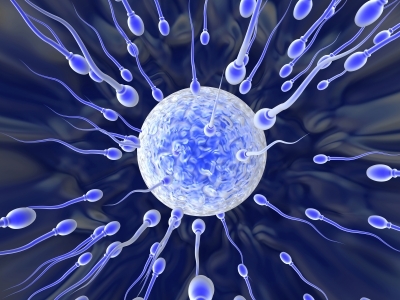Men's Skin Cells Turned Into Sperm Precursors

Skin cells from infertile men can be turned into the precursors of sperm cells in a lab, according to a new study.
The findings raise the possibility of one day making sperm from the skin cells of men with fertility problems, the researchers said. However, much more research is needed to determine if this is possible and whether it is safe.
In the new study, researchers first transformed the men's skin cells into stem cells, then implanted the cells into the testes of mice where they formed sperm precursor cells. However, one safety issue is that some of the stem cells formed tumors in the mice, said study researcher Renee Reijo Pera, who conducted the work while at Stanford University, and is now a professor of cell biology and neurosciences at Montana State University.
To conduct the study, Pera and colleagues took skin samples from three infertile men, and two fertile men. The infertile men had a genetic mutation in a region of the genome called AZF1 that prevented them from making mature sperm, a condition called azoospermia. [Sexy Swimmers: 7 Facts About Sperm]
The researchers used the skin cells to produce what are called induced pluripotent stem cells (iPS cells), which have the ability to become nearly any tissue type in the body. These iPS cells were then implanted into the testes of mice, where they turned into germ cells, which normally give rise to sperm in males.
However, in the study, the germ cells did not go on to form mature sperm in the mice, likely because of evolutionary differences between humans and mice that blocked the production of such mature cells, Pera said.
The stem cells from fertile men were much better at generating germ cells than those from infertile men. Still, the fact that the infertile men's stem cells produced germ cells at all was surprising, because men with the AZF1 mutation often have no germ cells, Pera said.
Sign up for the Live Science daily newsletter now
Get the world’s most fascinating discoveries delivered straight to your inbox.
The new findings suggest that these infertile men do in fact have the potential to produce germ cells, but the germ cells are lost over time, Pera said. If that's true, young boys with this mutation might be able to preserve their germ cells for the future by collecting and freezing samples of testes tissue, Pera said.
The mouse model used in the study will help researchers better understand the earliest stages of sperm development, Pera said. For example, the cells of human embryo "decide" whether they are going to be germ cells at day 12 after conception, she said. "We've developed a way to study the earliest steps," which take place in the fetus, Pera said.
Previously, the same group of researchers created germ cells from human embryonic stem cells. And last year, experiments in mice showed that skin cells of the animals can be turned into stem cells, which can then be turned into germ cells. When researchers implanted these germ cells in sterile mice, the mice became fertile.
The new study is published today (May 1) in the journal Cell Reports.
Follow Rachael Rettner @RachaelRettner. FollowLive Science @livescience, Facebook& Google+. Original article on Live Science.

Rachael is a Live Science contributor, and was a former channel editor and senior writer for Live Science between 2010 and 2022. She has a master's degree in journalism from New York University's Science, Health and Environmental Reporting Program. She also holds a B.S. in molecular biology and an M.S. in biology from the University of California, San Diego. Her work has appeared in Scienceline, The Washington Post and Scientific American.
Is getting an IUD painful?
'Useless' female organ discovered over a century ago may actually support ovaries, study finds









